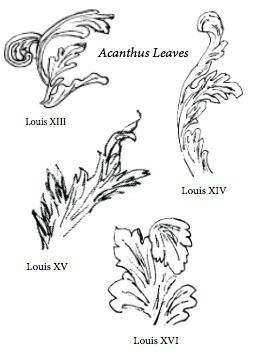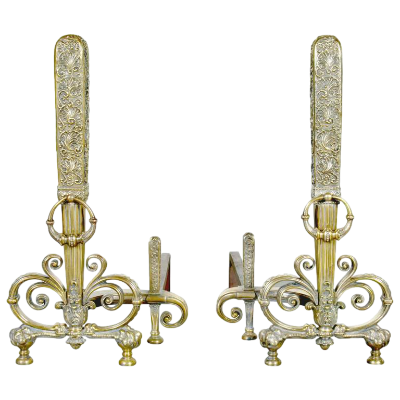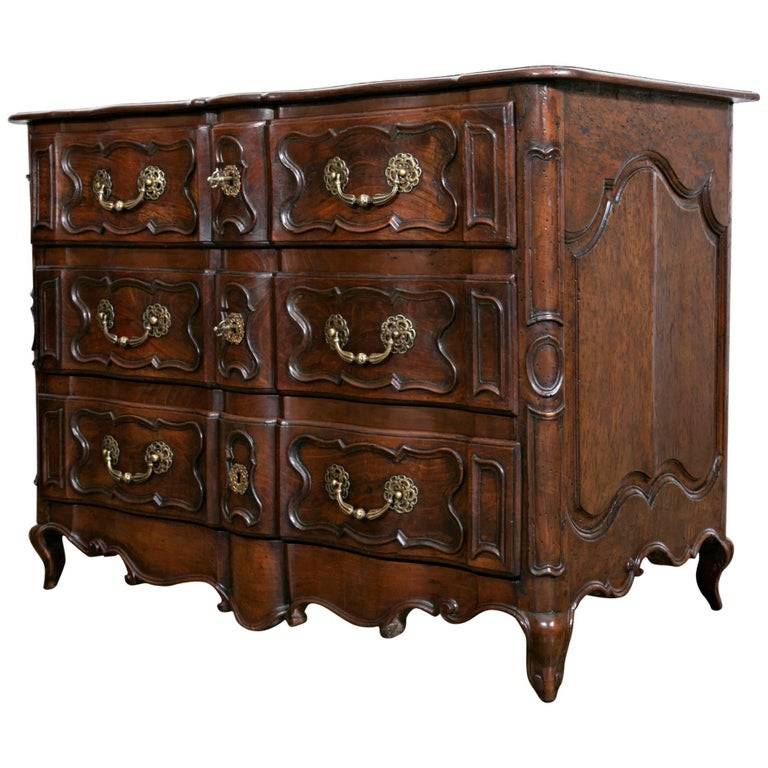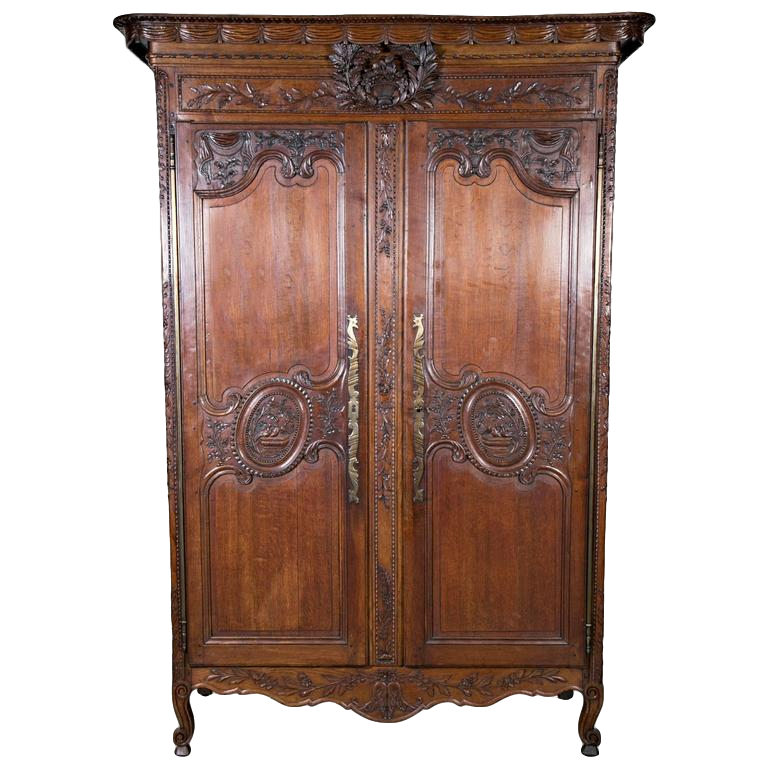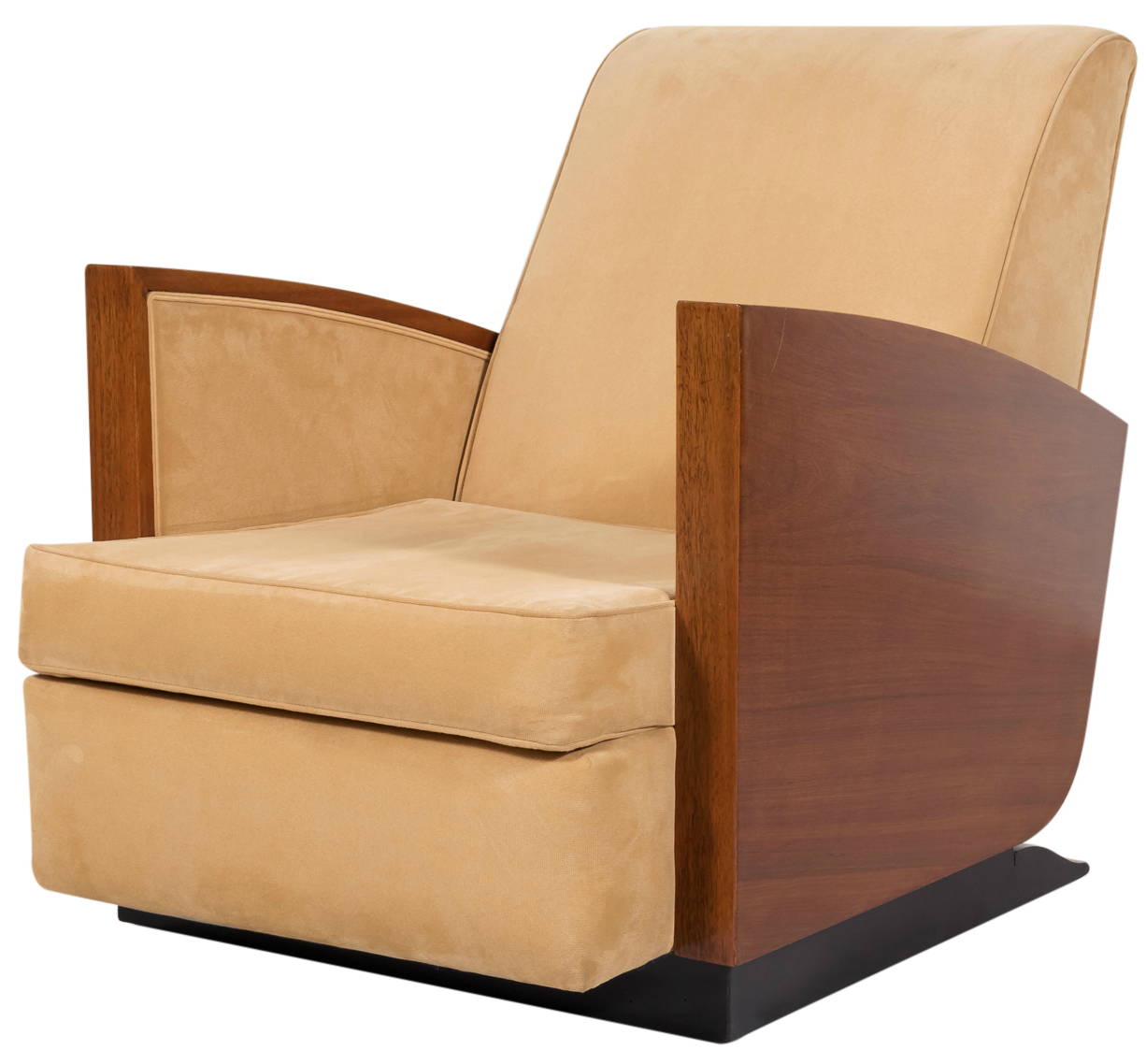
Whether you're new to the world of antiques or a connoisseur with a curated collection, Lolo's A to Z Glossary of French Antiques
furniture terms with photographs and illustrations is an essential tool that will help educate and enlighten you.
A
abattant: A French term for "drop lid" or "fall front" that is used to describe a drop front secretary desk, usually with drawers or cabinet doors below, as in secrétaire à abattant.
acanthus: A leaf used in classical ornament, particularly on Corinthian capitals. Stylized carving of the acanthus leaf is one of the most widely used motifs in architecture, furniture, and even upholstery. The acanthus leaf is an ornamental feature found in all King Louis styles, but details of the lobes and serrations differ somewhat in each.
ajouré: Pierced, used to describe the surface of an ornament or element. Literally, "to let the light pass through." (feminine: ajourée)
alabaster: Finely granular variety of gypsum which can be polished to a smooth and waxy finish. Often white and translucent, alabaster is used in sculpture, decorative stone panelling, beads and cabochons.
amphora: Classical two-handled storage jar. Later adopted as a neoclassical decorative motif.
andirons: Metal stands, usually of iron or brass, used for holding logs in a fireplace. Sometimes referred to as "fire-dogs."
anthemion motif: A stylized flower design of scrolling or radiating form, with the fronds curling inward. The classically inspired anthemion, or honeysuckle motif, originated with Greek and Roman architecture and was used extensively on furnishings and decorative arts of the late 18th and early 19th centuries.
antique: A work of art, a piece of furniture or any other decorative object which, according to United States law, must be at least 100 years old. The value of an antique depends upon its authenticity, beauty, age, rarity and condition.
apron: An extended area below the frame of a table, cabinet, chest of drawers or the bottom edge of the seat of a chair. Provides a decorative touch to an otherwise unadorned piece of furniture and at the same time provides structural support and strength.
arabesque: Literally, “Arabian.” An artistic portrayal of flowing lines, particularly scrolls of flowers and foliage arranged without concern for symmetry.
arbalete: A serpentine form characteristic of the finest Louis XV commodes, buffets and consoles. Directly derived from the French term commode arbalète, which means “small chest of drawers.” Arbalète refers to the bowed front of these commodes, that when viewed from above, follows the line of a bow.
arcading: Carved architectural ornament suggesting arches. Often used on chair backs and applied on panels.
armoire: A tall cupboard or wardrobe with shelves, hooks, hanging space and sometimes drawers, most often seen in a two-door style but also designed with four doors, divided horizontally at the center by a pull out shelf or drawer. Armoires are built with peg construction in order to be dismantled and reassembled. Originally designed to store arms or armor in late 16th century France (the name comes from the Latin word "armorium" which was a chest for storing armor), armoires were later heavily carved in prized woods with elaborate floral and figural motifs characteristic of the province or country where fabricated. French armoires were found in just about every room of the house and served as cupboards to store everything from linens to clothing to silverware, china, cutlery and even food.
armoire de mariage: Literally, "marriage armoire." According to French tradition, the wedding armoire was ordered by a father when his daughter was born. It was typically hand carved with symbols of wealth, prosperity and lovebirds, and given to a girl during adolescence. As the girl grew up, she would fill it with her trousseau, clothing for Sundays, everyday dresses, lingerie and embroidered linens that she had prepared with initials of her future family. She would take it with her to her new home after she was wed.
Art Deco: Period from 1925 to about 1937 when designers were influenced by simple geometric patterns and used materials like chrome, stainless steel and inlaid wood. The name comes from the 1925 French Exposition Internationales des Arts Décoratifs et Industriels Modernes held in Paris. The architecture and decorative arts shown at the 1925 Exposition embodied a whole range of unconnected styles and sources, including a modern interpretation of the 18th century style of Louis XVI (reigned 1643–1715), seen as the golden era of the French decorative arts, and references to the avant-garde art movements of the time, such as Cubism and the Bauhaus.
Art Nouveau: Literally, "new art." A period and/or style of decoration which first appeared in England in the 1880’s and quickly spread throughout Belgium, France and Germany. The characteristics of Art Nouveau were drawn from nature and featured plants and flowers in sinuous curves and convolutions, asymmetrical shapes and forms and frequently incorporated the female figure. It was an attempt by artists to create a truly new form of art that did not mimic the past.
athenienne: Basin on a tripod stand copied from an example found at Pompeii. A popular French Neoclassical and Empire form.
atlantes: From the Latin plural of Atlas, sculptural male figures serving as supports of entablatures, in place of a column or pier. Also known as telamon. Female supporting figures are called caryatids.
attributes: Refers to symbolic representations of important events depicted as decorative motifs. For example, rifles and game are attributes of the hunt; palm fronds are attributes of victory.
Aubusson A type of flat tapestry or usually pile less, densely patterned carpet named for the French manufactory in the town of Aubusson, France, established in 1664. Aubusson fabrics are highly regarded and of exceptional quality.






